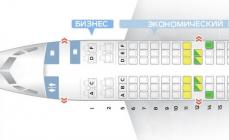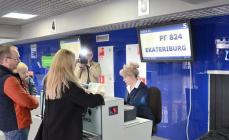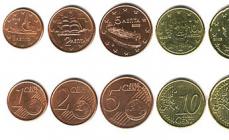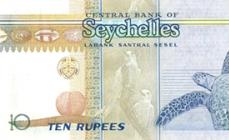28.08.2017, 08:43 26688
Boeing 737-500 is a passenger aircraft for short and medium haul airlines. This model was developed to replace the 737-300 aircraft. It became a little shorter (by two meters) than its predecessor and with an increased flight range. It was in this model that new generation engines were installed, which were distinguished by reduced noise levels and environmental impact.
Flight tests of the prototype aircraft began on June 30, 1989. In mid-February 1990, it received FAA certification, and Southwest Airlines took delivery of the first aircraft at the end of that month. The last model came out in 1999. For the entire period of mass production, 389 Boeing 737-500 aircraft were delivered to the airline. Today, this reliable airliner, due to its low noise level and low operating costs, continues to be in demand by many air carriers.
Location and numbering of seats in the cabin, seating diagram in the Boeing 737-500 aircraft. The best and least comfortable seats on the plane
The layout of seats in the Boeing 737-500 is different for each airline. If you want to choose the best seats and travel in comfort, check out your airline's cabin map.Cabin layout, the best and least comfortable seats on the Boeing 737-500 of UTair »
Boeing 737-500 is used by many Russian airlines, but in a configuration for 114 passenger seats, available only from UTair. Below is a diagram of the cabin of the Boeing 737-500 of UTair. 

The first two rows are business class seats. They are much more comfortable than any seats in economy class.
5 row(first row of economy class) - comfortable in terms of the fact that no one will recline their chair in front of you. But the whole flight will be a partition before your eyes.
Seats in row 11- the backs of the seats do not recline, as emergency hatches are located behind this row.
Seats in row 12- the backs of the seats do not recline, there are no two outer seats in the row due to emergency exits. Two seats in a row are always better than three, especially when traveling with two people.
14 row, seats A and F- comfortable places. It is possible to stretch the legs forward
Due to the fact that there is no chair in front of you, it will be possible to stretch your legs forward. This is very important for long distance flights. Convenient places.
Seats in row 22 C and D- Proximity to toilets plays a significant role. People will walk past you back and forth, they can disturb you, standing next to you. Also, your flight will be accompanied by the sounds of the descent tank and the slamming of the door.
23 row- the last row. Armchairs may not recline, because. located close to the wall of the toilet. Well, the proximity to the toilets make these places completely unattractive.
SmartAvia( N ordavia)
Cabin layout, best and least comfortable seats on the airline's Boeing 737-500 aircraftSmartAvia (Nordavia)in a two-class layout
It occupies the first two rows in the nose of the aircraft, the seating arrangement is 2:2, that is, a total of 8 seats. The seats are quite comfortable compared to the economy class, there is more legroom, and the seats are wider and softer. For the business class, there is a wardrobe for outerwear and an increased level of service.

The economy class is divided into two cabins, the first from rows 3 to 8, the second - from 9 to 20, and has 108 seats in a 3:3 layout.
- 3 row comfortable, the distance between the seat and the partition is 101.5 cm. These seats are good for flights with children. For some passengers, the neighborhood with children is a minus, because of the possible crying and additional fuss. Also, not everyone likes to look at the wall for the entire flight.
- 3 to 7 row serviced by flight attendants first.
- 8 and 20 row has limitations in reclining the back of the seats. 20 next there is a toilet, so you can hear the slamming of doors and the draining of water.
- 9 row located behind the emergency exits and fenced off by a partition, the distance between the partition and the chair is 114 cm - this is enough to stretch the legs even for a tall person. The absence of passengers in front is a good advantage, no one will recline the back of their chair on you.
- Other places, which are not included in the description, are standard and do not differ in anything special.

The single-class layout of the Boeing 737-500 of Nordavia Airlines provides for 126 seats, 21 rows in a 3:3 layout.
- 1 row. There are no passengers on the front row in front, so no one will let go of the back. Food and drinks are served first. Of the minuses, it can be noted: the inability to recline the armrests, they are fixed and a small distance between the partition and the chairs.
- 6 seat row AF some aircraft do not have windows or have limited visibility.
- 9 row. The seat backs of the 9th row are blocked or have restrictions in reclining.
- 10 row comfortable, front enough legroom. Minus - this space cannot be forced with hand luggage, as a rule, tickets for the 9th row are not sold to passengers with children, animals, the elderly. This is due to security requirements.
- Seats CD 20 row and 21 row located close to the toilet, additional fuss and even smell is possible. Seat backs 21 rows do not recline.
Flight performance
- Cruise speed: 813 km/h
- Maximum speed: 912 km/h
- Practical range: 5200 km
- Liner capacity: 132 passengers
- As a result of the design features of the Boeing 737-500, the 13th row is missing in the cabin. Following the 12th, immediately goes the 14th row.
- One of the greatest technical achievements of this model is the development of dynamic turbojet engines. Thanks to this technology, only a small amount of air, entrained by the turbine blades, enters the main turbine. The main air stream flows around the turbine, absorbing the sound of the jet stream at the exit and significantly reducing the noise level. This effect, which reduces the impact of engines on the environment, increases comfort inside the aircraft.
- To paint a Boeing 737-500 aircraft - the photos are presented above - over 200 liters of paint are required, when dried, its weight is 113 kg.
The medium-haul Boeing 737 500 serves many flights of such major airlines as Transaero, UTair, Nordavia or Belavia.
It belongs to the glorious family, whose aircraft are the most massive among passenger liners in the entire history of their existence. We will consider the general characteristics of this model, as well as the layout of the Boeing 737 500 cabin itself.
Like all Boeing 737, this airliner is a narrow-body airliner for medium and short haul airlines.
This model has a huge number of advantages: from an increased level of comfort and efficiency, to full compliance with environmental parameters and global flight safety requirements.
Boeing 737 500 aircraft of Lufthansa
Of the shortcomings, perhaps, one can single out the absence of an emergency fuel dump, but it is more than offset by excellent fuel economy and a crew of two pilots.
This allows airlines to offer passengers more than attractive prices for flights.
Compared to others, the Boeing 737 500 is shortened by 2 meters (its total length is 31 m). It has a higher range than the 737 200 and 737 300 models. Passenger capacity is from 132 to 114 seats. It has been in operation since March 2, 1990.
Boeing 737 500 cabin map
For example, let's take the layout of the cabin of the Boeing 737 500 UTair and see the best places there. This company has only about 32 aircraft of this type.
There are options for 116 and 126 seats. We will choose a plane with 116 seats. There are 6 seats in a row - 3 on one side and 3 on the other side.

Boeing 737 500 cabin map
As usual, there is 2 classes of service - Business and Economy. The business class is located in the first two rows, consisting of 8 seats. As elsewhere, it is characterized by an increased level of comfort.
Rows 3 to 20 seats are at the disposal of economy class passengers. There are 108 seats in total.
On the one side 3 row inconvenient because there is a partition in front, but on the other hand, no one will throw their seat back on you. Another plus is that it is more peaceful here. Small children sitting in front or especially noisy passengers will disturb you less.
3-7 rows has one important advantage. They will be served first by flight attendants, after business class passengers, of course.
8 row located in front of the emergency exits. The disadvantages of such a row are obvious - you can’t recline the back, so you have to sit in the same position for the entire flight, which is not very convenient, given that some flights are very, very long.
9 row located right next to the emergency exits. Therefore, even at check-in, passengers are specifically asked if they agree to fly. You can't recline the back either. But there is a plus - you can safely stretch your legs forward without fear of noisy objections from your neighbors.
From 10 to 19 row- these are the standard places where you can recline the back. But here you are faced with the problem of comfortable placement of the legs.
Last 20 row has its own significant drawback - proximity to the toilets. Here you will have to listen to the sound of opening and closing doors for the entire flight, as well as watch the queue.
The second aircraft, designed for 126 seats, differs in that there is no division into business and economy class. All rows - from 1 to 21 - are economy. This is perhaps its only difference from the first. Otherwise, it coincides with the arrangement of places with the first.
On the UTair website, you can choose suitable seats for you. and you know that you may become ill, it is better to choose places near the toilets so that you can quickly go to them. Or choose an aisle seat.

Seats on a Boeing 737 500 Utair
If you have, combined with agoraphobia, then avoid places near the porthole.
If there is a transfer, it is better to sit in places closer to the exits so that you can quickly and quickly get out.
The Boeing 737-500 used for passenger transportation is the smallest representative of the famous Boeing 737 Classic series. Its distinctive external feature is a shortened fuselage. With regard to flight characteristics, the liner of this modification can make longer flights when compared, for example, with the base model 737-300.
Boeing 737-500 cabin
The Boeing 737-500 was designed in 1989 and entered mass production a year later. To date, this model is not produced (the last aircraft was produced in 1999), as it was replaced by a more modern design - 737-600. However, this does not mean at all that it is dangerous to fly on such a vessel. With proper operation, the rules of which are clearly regulated and mandatory for all airlines, the aircraft can serve for decades.
This is interesting! It is impossible to establish the average life of such equipment in years. Manufacturers use a unit of measure such as flight hours. Typically, the service life of the liners is from 30 to 60 thousand flight hours However, they can be used up in 10 or 20 years or even more.
Boeing 737-500 modifications are used by various foreign and domestic companies, among the most famous are Lufthansa, Utair, Transaero, Aeroflot and so on. It is worth noting that although there are three classes of aircraft, which will be discussed later, comfort largely depends on the carrier itself.

Interior scheme: Boeing 737-500 for 56 seats
Types
The layout of the Boeing 737-500 cabin depends on the type of liner. On the Internet, you can find very conflicting comments: some passengers were comfortable on the plane, while others did not have enough space. There are 3 main types of the 737-500 model itself, in which the location of the seats is different:
- VIP. Typically, these aircraft are used for corporate flights. There are only 56 seats on board, and the cabin is divided into 3 classes: imperial, business and economy.
- Liner for 101 passengers. In such an aircraft, 8 seats are reserved for business class, 42 for economy and 51 for tourist.
- Aircraft with 112 seats. As a rule, this type of cabin is not very comfortable, but tickets for it are the cheapest. The cabin is divided into 2 salons: business and economy. Under the first allotted only 4 seats, and under the second - the remaining 108 seats.
How to choose the best places?
You don’t even need a diagram of a Boeing 737-500 to understand the following: the most comfortable flight will be business class. Firstly, the passengers there do not interfere with each other, the seats are at a sufficient distance from each other. Secondly, you will not be bothered, for example, by the crying of small children or the snoring of a tourist who is almost at the opposite end of the cabin. However, in the following, we will focus on how to get the best seats in the economy class cabin, since there is much more choice there.
Note! Row 13 is missing.
It is not difficult to find the best places on the cabin map of the Boeing 737-500 of Aeroflot or another airline. If you want to leave enough legroom, pay attention to rows №№10 and 18. The tenth row is notable for the fact that this is the beginning of the economy class cabin, that is, there will be no other seats in front of you, but only a screen enclosing the business class. Before the 18th row is quite spacious due to the fact that there are emergency exits on the sides. But keep in mind that tickets in this row are not sold to passengers with children and the elderly. This is because, in the event of an emergency, passengers closest to the emergency exits must be able to open them.
The worst places are in the following lines:
- 15 - there will be no porthole next to you;
- 17 - emergency exits are located at the back, due to which, for safety reasons, it is impossible to recline the back sufficiently;
- 26 and 27- most often in these rows the seats are narrower;
- 28 - the backs of the seats do not recline, as they rest against the wall, in addition, you will not be able to rest or sleep due to the constant visits to the toilet by passengers.

Interior scheme: Boeing 737-500 for 112 seats
The rest of the seats in the cabin can be called average in terms of convenience. Let's say you have decided on a row, which of the three chairs to choose? The photo of the Boeing 737-500 shows that the entire cabin is divided into 2 rows of three seats each. Place near the porthole is convenient for a number of reasons: enough light to read, you can look out the window, you can easily take a nap without worrying about being disturbed by a neighbor when he wants to go to the toilet. Perhaps there is only one minus: if you need to visit the WC, you will have to disturb both fellow travelers.
Location next to the aisle in terms of pros and cons, it is the exact opposite of the first option: you yourself can easily get up at any time, but you will have to let your neighbors out. In addition, other passengers and flight attendants with carts will constantly walk past you. Armchairs in the middle are perhaps the least convenient. On the one hand, they combine the main pros and cons of the two previous options, but they add a disadvantage associated with the lack of "their" armrests. Also, do not forget that neighbors can simply “crush” you.
Belavia aviation company uses 6 Boeing 737-500 aircraft. Airplanes are far from new.
Here is their age according to the tail numbers:
EW250PA - 18.2 years
EW294PA - 17 years old
EW253PA - 17.7 years
EW252PA - 17.6 years
EW290PA - 16.9 years old
EW251PA - 16.4 years
One of the most popular models in the aircraft fleet of Belavia. Representative of the "classic" line of Boeing. The aircraft is designed for long-haul and medium-haul flights, therefore it is very maneuverable, economical, and mobile.
The cabin has the following configurations:
1 aircraft Boeing737-505 in two-class configuration with 120 seats (8 seats in business class and 112 seats in economy class)
3 Boeing 737-524s in two-class configuration with 123 seats (8 business class and 115 economy class)
2 Boeing737-5Q8 aircraft in single class configuration with 138 seats (138 seats in economy class)

Consider the layout of the cabin:
1 p. - only business class here. A good business class, if, for example, compared with the Boeing 737-300 and 737-400. In any case, when the chair is fully reclined, you can get up from your seats near the porthole and not disturb your neighbor.
10 p. - first row economy class. on the diagram are not marked with a different color, but rather curious places. Since the screen serves as a partition between the classrooms, you can assume that you will have a lot of leg room, especially in relation to the aisle seats.
15 p. - there may be no porthole or it may be inconveniently located
17 p. - Seat backs are limited in reclining or do not recline at all. In view of the emergency exit at the back.
18 p. - again, due to the emergency exit, the distance to the front row is slightly increased. Of the minuses - it is forbidden to force the passage with hand luggage. It is also forbidden to seat elderly people, passengers with children, and so on in these places.
27 and 28 p. - Proximity to the toilets does not give comfort.
The last row - the backs do not recline, as they rest against the wall of the toilet. Still, the proximity to the restrooms can deliver various inconveniences, starting from constant queues and walking, and up to the sound of the cistern.
A couple of general points about the location of the seats in the Boeing 737-500 - their disadvantages and advantages.
1. Seats that are located next to the window have the advantage of being able to look into it during the flight (this, of course, depends on the time of flight and the weather). If you fly at night, this merit does not count. Another neighbor will not bother you if he wants to get up. These places have one drawback - it is not very convenient to leave it yourself. Therefore, if there is no need to go to the toilet often or you intend to oversleep the entire flight, choose seats by the window.
2. The seats, which are located near the aisle, have their own dignity - it is very easy to get up from it, if necessary, to the toilet. The disadvantages are that a neighbor can be disturbed if he needs to get up. Flight attendants with carts and passengers who pass through the cabin to the galley and toilets can also interfere. Therefore, if you are flying with a child and, most likely, you will often have to go to the toilet. Or you yourself have a need to go to the restroom more often, then choose from the edge of the seat.

The Boeing 737-500 model, which is the youngest in the classic series of this series, is an aircraft for medium and short haul airlines. This model was mass-produced from 1990 to 1999, and the company's specialists have been working on the development since 1983. In general, the Boeing 737-500 is a shortened version of the 737-300, but it has an increased range.
History of creationAt the time of the appearance of this model, the main competitor for it was the Fokker-100 aircraft, in which there were 115 seats. Some American companies preferred the brainchild of Fokker, so the Boeing management decided to implement a project to create a 737-500 model, which would have 132 passenger seats, that is, 15% more than previously proposed models. Subsequently, the number of seats was changed, and today it ranges from 107 to 117.
Already in May 1987, the company received 73 orders. The improved cabin of the Boeing 737-500 was distinguished by increased comfort, and the CFM56 series engines ensured a low noise level.
Currently, the technical characteristics of the Boeing 737-500 make this aircraft the most optimal solution for airlines with low but regular passenger traffic. It uses EFIS digital avionics systems manufactured by the American company Honeywell. The carrier can also install a GPS satellite navigation system.
Currently, about four hundred Boeings of this model, which can fly at speeds up to 910 kilometers per hour for distances up to 5550 kilometers, are in operation in the world fleet.
CabinThe layout of the cabin scheme of the Boeing 737-500, the capacity and location of seats in it depends on the wishes of the air carrier companies. So, if the entire cabin belongs to the economy class category, then the number of seats in the Boeing 737-500 is 119, including two crew seats. The smallest number of passenger seats in the cabin layout, where 50 seats are reserved and 57 - (a total of 107 seats). Regarding the best seats in the Boeing 737-500, it all depends on the wishes and preferences of the passenger. Of course, business class seats are unrivaled, although those who have purchased tickets for seats A, C, D and F will have to look at the wall during the flight. But the reclining backrest and the ability to stretch your legs by stretching them forward more than compensate for this. By the way, in the 5th row of the economy class, this drawback is also present. If the flight is long, then the ability to stretch your legs forward and recline your back is a huge plus. There are two such seats in the 114-seat cabin - row 14, seats F, A. For those who fly together, it is better to purchase tickets for row 12 seats. The fact is that it is here in the Boeing 737-500 that emergency exits are located, so there is no pair of outer seats. But keep in mind, the backs here, unfortunately, do not recline. Similar disadvantages exist for the seats in the 11th row. 
There is no doubt about the most unfortunate places in the cabin of the Boeing 737-500. These include the extreme seats of the penultimate, 22 row, as well as the entire 23 row. The fact is that behind them are toilets. Not only will you be forced to watch passengers scurrying back and forth endlessly during the entire flight, you will also have to listen to the sounds of slamming doors and lowered tanks.
So that your trip goes without unpleasant surprises. Take care of booking air tickets in advance. Also, take the time to look at the seating chart for the particular aircraft you are planning to fly.







